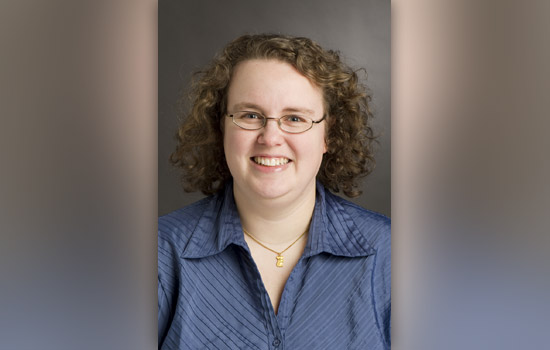Palmyra, Mo., Resident Wins National Imaging Award
Kelly Canham is a doctoral student at Rochester Institute of Technology
Kelly Canham
Palmyra resident Kelly Canham won the use of a specialized imaging device to support her doctoral research at Rochester Institute of Technology.
Canham, the daughter of Garry and Rogena Canham of Palmyra, Mo., is a graduate student in the Digital Imaging and Remote Sensing Laboratory in RIT’s Chester F. Carlson Center for Imaging Science. She won temporary access to a spectralradiometer, an instrument that measures the amount of light reflected from a material at each wavelength along the electromagnetic spectrum.
The award was made through the Alexander Goetz Instrument Program, co-sponsored by Analytical Space Devices Inc. and the Institute of Electrical and Electronics Engineers Geoscience and Remote Sensing Society. A total of seven award winners were named; two recipients are from RIT.
Canham shares her award with David Messinger, director of the Digital Imaging and Remote Sensing Laboratory, and William Middleton, associate professor of sociology and anthropology at RIT. They are developing image-processing tools that will aid Middleton’s archeological research pertaining to the Zapotec civilization in Oaxaca, Mexico.
In December, Canham will use the spectralradiometer, a Field Spec Pro, in Oaxaca to measure the amount of light reflected from soils and vegetation common to the area. The library of spectral signatures—not images—she builds will help the archeological team decide where to dig. Distinct spectral signatures or “fingerprints” will help Canham distinguish between different vegetation and minerals in the soil in Oaxaca.
The team will compare the spectra to images processed in an earlier stage of the project using data collected by NASA’s Earth Observing 1 satellite and its Hyperion hyperspectral sensor. Hyperspectral imaging combines bands of spectral information from the electromagnetic wavelength into three-dimensional data cubes.
“The overall result of this research is to predict archeologically interesting locations using the hyperspectral imagery,” Canham says. “This will help Dr. Middleton and other archaeologists focus their time and efforts in their research. They will not need to rely only on time- and resource-consuming ground surveys to determine a site. Instead, they may simply look at a map created from this research to determine where they would like to focus a more extensive dig-site.”



